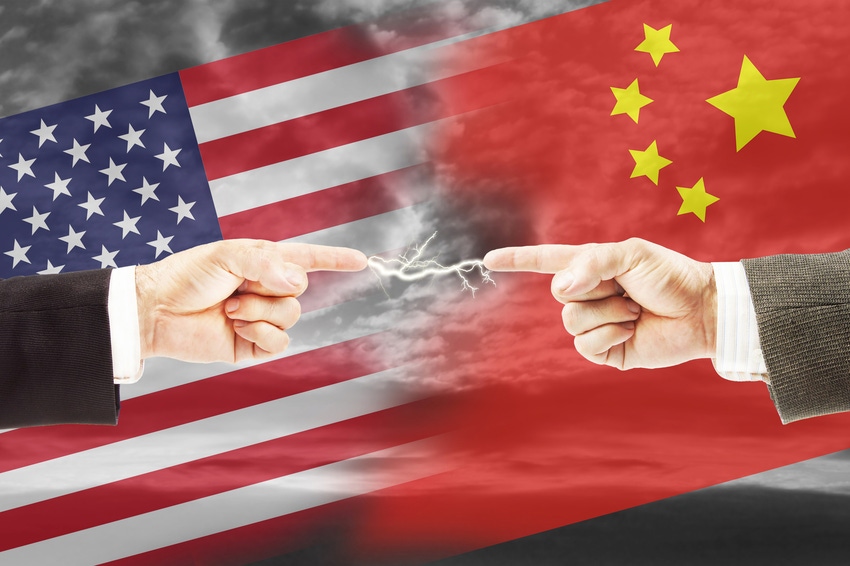While the two presidents have spoken to each other again, the American government are planning to further restrict Huawei’s access to chip supplies.
March 30, 2020

While the two presidents have spoken to each other again, the American government is still planning to further restrict Huawei’s access to chip supplies.
President Trump and Xi Jinping, his Chinese counterpart, spoke on the phone for the first time since February after increasing acrimony between the two countries blaming each other for the ongoing COVID-19 pandemic. It took place shortly after an emergency G20 online conference, in which both heads of state participated, and after Johns Hopkins statistics showed the US has registered more COVID-19 patients than China’s official number.
After the talk, Trump, in keeping with his communication tradition, turned to Twitter to share the news and his assessment:
If there is anything surprising in the tweet, in addition to Trump’s unpredictable change of mood and throw-away sentiments, is what is not there. It did not include the term “Chinese virus” which the President has repeatedly used in reference to the coronavirus that caused COVID-19 since a Chinese foreign ministry spokesman publicly promoted the conspiracy theory, on Twitter (which is banned inside China), that it was the American Army personnel that brought the new coronavirus to Wuhan, where the current global pandemic first started.
The official Chinese media, for example the China Daily, unsurprisingly covered the story in a manner as if the phone call had been a lecturing by Xi. In addition to defending China’s actions in the course of the pandemic, and offering to help other nations combat the disease, Xi is reported to have specifically asked the US to “adopt concrete measures to protect the safety and health of Chinese citizens, including students, in the US.” Many of China’s rich and famous have sent their children to the US, as students or otherwise. Xi’s own daughter was at Harvard before he became China’s supreme leader.
There had been signs of rapprochement prior to the call. For example, China’s ambassador to the US refused to endorse the foreign ministry spokesman’s conspiracy theory in an “Axios on HBO” interview a few days before.
Despite the possibility of thaw in the US-China relations at the highest level, actions behind the scene to curb China’s expansion in the US have not stopped. Reuters reported that just before the G20 conference call, officials from the National Security Council and the U.S. Departments of State, Defense, Energy and Commerce had met and agreed to change the Foreign Direct Product Rule in an effort to restrict Huawei’s access to chips made by companies using American technologies and American equipment.
This is aimed at reviving a similar plan tabled in February, which President Trump has presumably refused to sign into law. He told reporters at that time “We’re not going to be sacrificing our companies … by using a fake term of national security. It’s got to be real national security. And I think people were getting carried away with it.”
Huawei’s founder has remained defiant throughout, downplaying both the impact of the American sanctions and that of the hit on market by the pandemic. However, if the new measures pushed by the American government are approved by the President, they can have material impact. Despite that HiSilicon, Huawei’s wholly-owned chip design company, has made impressive progress in recent years, it relies on fab firms like Taiwan Semiconductor Manufacturing Co., the world’s largest microchip manufacturer, to turn the designs into physical chips. There are only a handful companies that can do so, and almost all of them use American technologies.
China’s public stance to shift blame of the COVID-19 pandemic to other countries may even backfire from markets in addition to the US, and Huawei could be caught in it. The same foreign ministry spokesman has also actively disseminated rumours that the virus was originated in Italy, which has been flatly refuted by the Italian scholar it purported to quote. This and his earlier shenanigans against the US have lent support for growing pressure inside the British government on Boris Johnson, the PM in self-isolation after tested positive for COVID-19, to revisit the decision to allow Huawei to participate in building the country’s 5G networks.
It is probably fair to say that Huawei’s opaque relationship with the Chinese state has not helped its image in the western markets, nor has China’s questionable way in both dealing with the pandemic and reporting its number of patients and casualties. The company itself, as well as other Chinese tech companies, has generously donated large quantities of medical equipment and protective gears to Europe.
About the Author(s)
You May Also Like








.png?width=300&auto=webp&quality=80&disable=upscale)


_1.jpg?width=300&auto=webp&quality=80&disable=upscale)


.png?width=800&auto=webp&quality=80&disable=upscale)